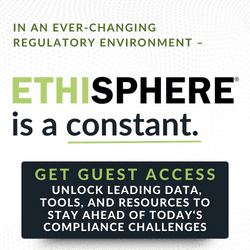Financial reporting still involves pulling data manually out of an ERP/EPM system into Excel, then manipulating the data to create custom reports – a slow and error-prone process. insightsoftware’s Craig Nickerson outlines a better alternative.
A big part of financial reporting for businesses and organizations is related to regulatory compliance. This can vary widely depending on the organization and industry, such as the Consolidated Annual Financial Reports (CAFR) for a state, municipality or other government entity; FR 2900, FR Y-9C and other “call reports” for banks; 10K, 10Q and other quarterly and annual reports that publicly traded companies must submit to the SEC; or even NCAA compliance reporting for higher education institutions.
But perhaps the most well-known example is the Sarbanes-Oxley Act. Enacted in 2002 in the wake of numerous corporate scandals, it was intended to restore investor confidence by strengthening audit committees, improving internal controls and making directors and officers accountable for the accuracy of financial statements, among other things.
Unfortunately, Sarbanes-Oxley and other regulations require a significant amount of financial reporting effort to ensure compliance, which in turn sheds light on a huge problem: how manual most companies’ financial controls and reporting remain. This issue is further compounded by compliance rules and reporting requirements evolving based on a specific administration’s objectives, adjustments to underlying accounting rules, industry trends or other changes.
And any time a compliance report needs to be run or changes are implemented in the regulations the reporting processes have to be manually recreated from scratch. This not only stresses the employees that need to deliver compliance reports by specific deadlines, but also forces financial teams into the role of historical bookkeepers rather than spending time analyzing operational results to optimize for growth and return on investment.
While a lot of technical innovation has happened since 2002 (think about it: Netflix was still mailing DVDs back then!), the challenge in financial reporting is that a company’s treasure trove of financial data resides in monolithic enterprise resource planning (ERP) and enterprise performance management (EPM) systems that retain and structure data in very rigid and complex ways. Companies invest millions in these systems, dedicating huge teams and amounts of time to manage them, all to gain a strategic edge. However, it is exactly this ERP complexity that necessitates the manual, labor-intensive reporting that is frustrating, slow and error prone.
In a survey, 44 percent of teams realize less than half the expected benefits of their ERP system, more than 50 percent realized no productivity or efficiency gains after implementation and — most alarmingly, given the required investment — only 17 percent believe their ERP has led to better-informed decision-making (Panorama Consulting Solutions, ERP 2018 report).
The irony is not lost on anyone who has to create these reports that in the age of agile and automated IT, financial reporting often still entails the finance team pulling data manually out of an ERP/EPM system to put into Excel and then manipulate to create a custom report. To illustrate how the wave of technology automation has not reached the CFO’s office: In 2013, 60 percent of U.S. and European companies said they were still doing manual reconciliations. Four years later, the number of U.S. companies reporting they were still manually reconciling reports remained essentially the same at 58 percent.
Financial and compliance teams need to be strategic, proactive and responsive to changes in regulations, but ERP systems are tactical and reactive. A new approach is to use intelligent reporting software as a front end to leading ERP and EPM systems, extracting the critical data in a standardized format that can be locked down in a central location and rerun every cycle. In addition, this approach brings much-needed flexibility to business users who have knowledge of the evolving regulatory rules, empowering them to adjust reporting on their own without IT or other technical intervention, which can take weeks or months.
According to The Hackett Group, companies using more streamlined and automated reporting required 49 percent fewer reports and spent 39 percent less on business performance reporting labor. Others have seen the legacy cycle time to create monthly consolidated financial statements reduced by half, from 10 days to less than five days, while others report saving 50 to 100 hours annually on financial reporting.
One financial services holding company that offers commercial and consumer banking operations across multiple states provides a typical case study. They had difficulty accessing applicable data in their core systems and often rekeyed data into static spreadsheets. Every report was a manual, multi-step process with heavy reliance on IT to create and edit reports that often had data accuracy issues. As they put together a variety of regulatory and compliance reports, from internal board reports to SEC forms and call reports, they found finance was consuming more than 75 percent of the organization’s IT and ERP resources. After implementing intelligent reporting software, the organization automated 50 to 100 reports and saved 200 to 300 hours per year.
Since regulations and the reporting rules dictating various markets, industries and businesses can change quickly based on macroeconomic conditions, as well as elections and political influence, it is critical for finance and compliance teams to move away from cumbersome manual reporting processes and instead strive to reach a state of “continuous reporting.” This is essentially where the CFO can gain an understanding of the complete status of the business and immediately report on it — including any changes to underlying regulations — at any point in time and not just the usual end of a month, quarter or annual cycle.



 Craig Nickerson is CFO of
Craig Nickerson is CFO of 








